The Insider’s Shopping Guide to London
In the 19th century Napoleon mocked England as a nation of shopkeepers, "une nation de boutiquiers." As it turned out, this was the greatest of compliments, because today, London in particular excels at shops and shopping. We set out to find the best—those with design flair, authenticity, relevance, and passion. In almost every shop, when the shopkeeper was asked, they offered a tip on their own favorite neighborhood find. And so it went to create this insider’s guide for design lovers.
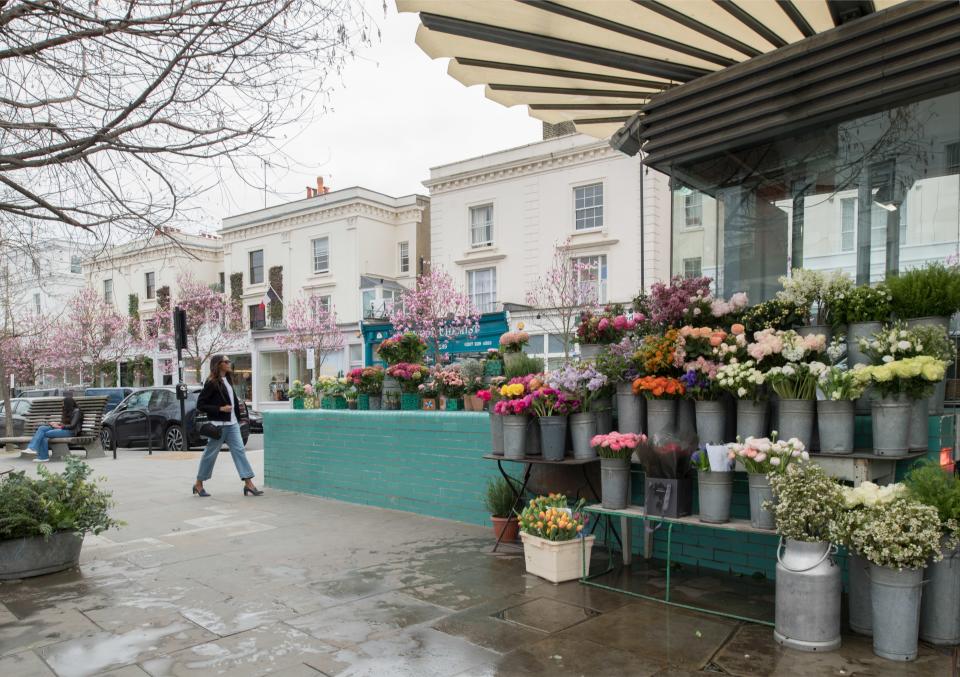
We explored five neighborhoods—Chelsea/Pimlico, Notting Hill, Mayfair/St. James's, King's Cross, and Shoreditch—with visits to established names that respect the heritage while looking to the future, as well as bright young stars paving the way forward. London shopkeepers have a knack for being one step ahead without losing sight of what came before. Owners and creatives we met with share a curiosity about the world, filtering what they discover through a uniquely British point of view—this nation of shopkeepers knows their stuff. Here, a three-day visit for the design-minded.
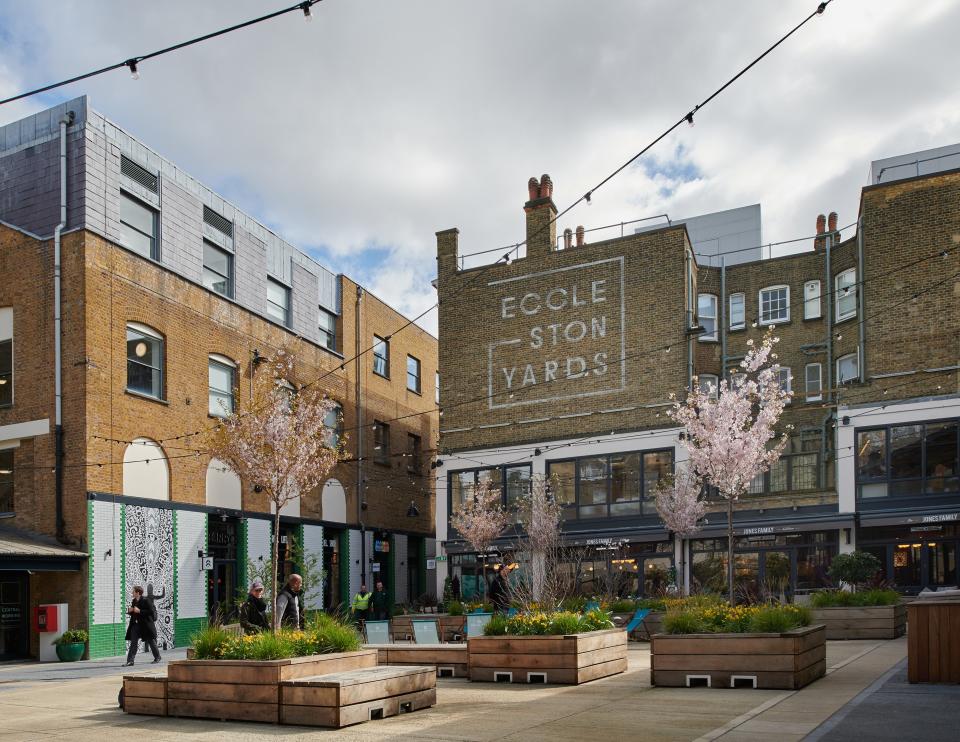
Chelsea—quaint and cozy, like a pair of velvet slippers. A Pimlico Road window-shop stroll past top design houses Robert Kime, Soane, Jamb, Rose Uniacke, Christopher Howe, and the legendary Sibyl Colefax & John Fowler reminds one of the roots of the place. Lesser-known shops, farm-to-fork eateries, antique shops, and spots to destress and detoxify within walking distance from Pimlico Road elegance include cool, bohemian Wild by Tart at the newly opened Eccleston Yards (housed in the former municipal building that provided power for nearby Buckingham Palace); unusual Felt, with its trove of vintage objects and design for the home and person on neighborhood-y Chelsea Green; and the nest of design ateliers and antiques shops on Langton Street: Penny Morrison, Guy Goodfellow, James McWhirter, and Toad all should be marks on the must-visit Chelsea design map. A perfect end to the day includes a stop at zen Haybarn Spa on Draycott Place.
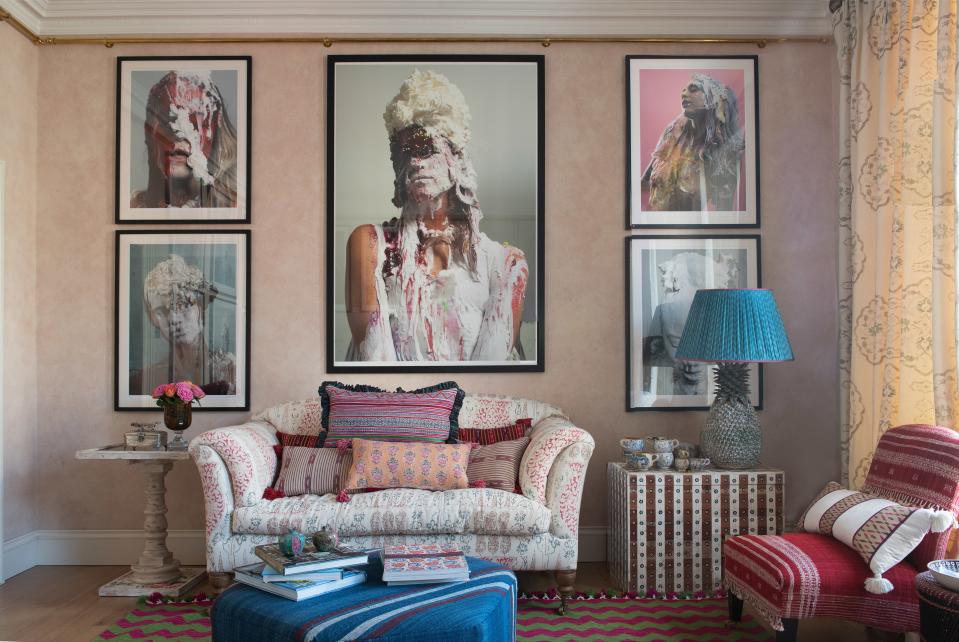
Want to live like a local? Leafy Notting Hill is the place, dotted with candy-colored houses, eye-catching fruit stalls, and shops ranging from cool to unusual. Stay at The Laslett, a cozy hotel set in five Victorian townhouses on pretty Pembridge Gardens. Stroll Kensington Gardens, stop for coffee at Sally Clarke’s (who, inspired by Alice Waters in the late '70s, brought those influences home to London, revolutionizing British dining), shop vintage and antiques at Portobello Market or Golborne Road on a Friday or Saturday, and lunch at Chucs any day. Note the passion for color, often detailed in smart London homes, at shoe designer Penelope Chilvers (Spanish craftsmanship interpreted for cosmopolitan Londoners). Shop for that unique design find at Willer, tucked away on Holland Street, and head back for a hip tea or early cocktail at The Laslett.
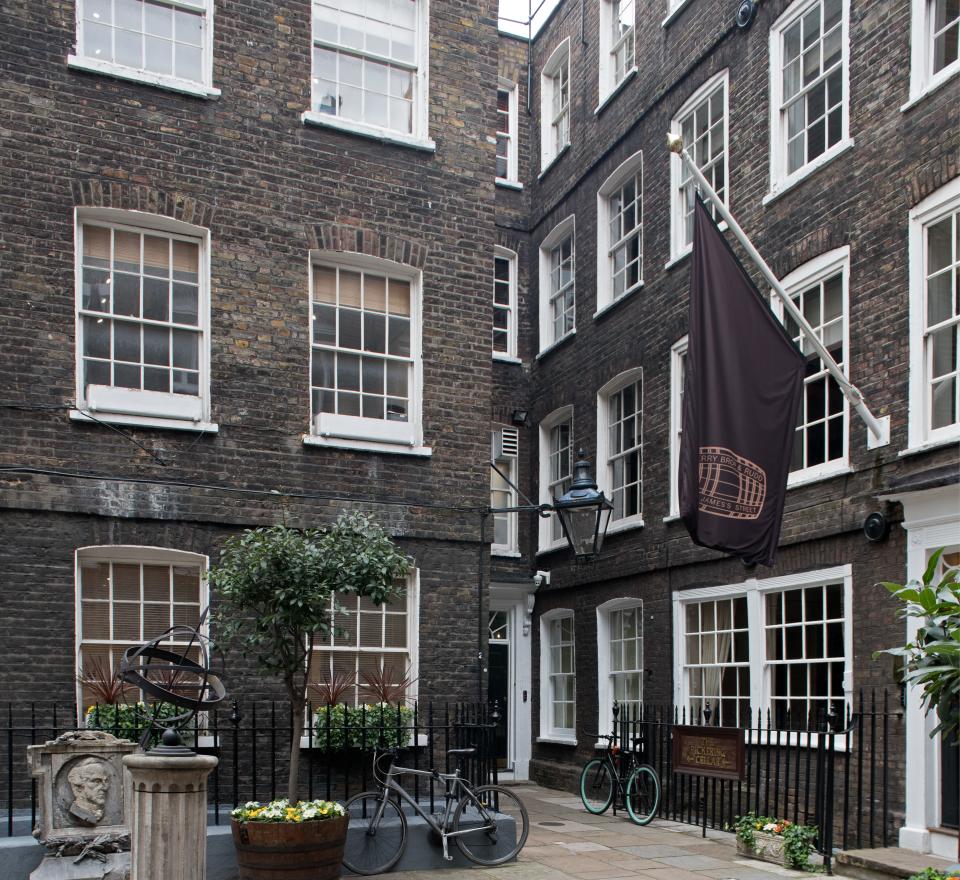
Where do art, culture, fashion, and history collide? Mayfair and St. James’s. From the ancient to the cutting-edge, the area includes Pickering Place, the city’s smallest square. Marked by a plaque off a tiny alleyway, it notes the site of the Texas Embassy from the days when the southern state was an independent country. Next door is 17th-century wine merchants Berry Bros & Rudd. Fast-forward a few centuries, and a five-minute walk away, to Thomas Heneage Art Books on Duke Street, where whatever edition or info you might be after—often even before you know you are looking for it—is to be found. For books on everything from Jean-Michel Basquiat to Fish Hooks of the South Pacific, talk to Thomas. Free espresso just for dropping by? That's a yes at Christie’s on King Street.
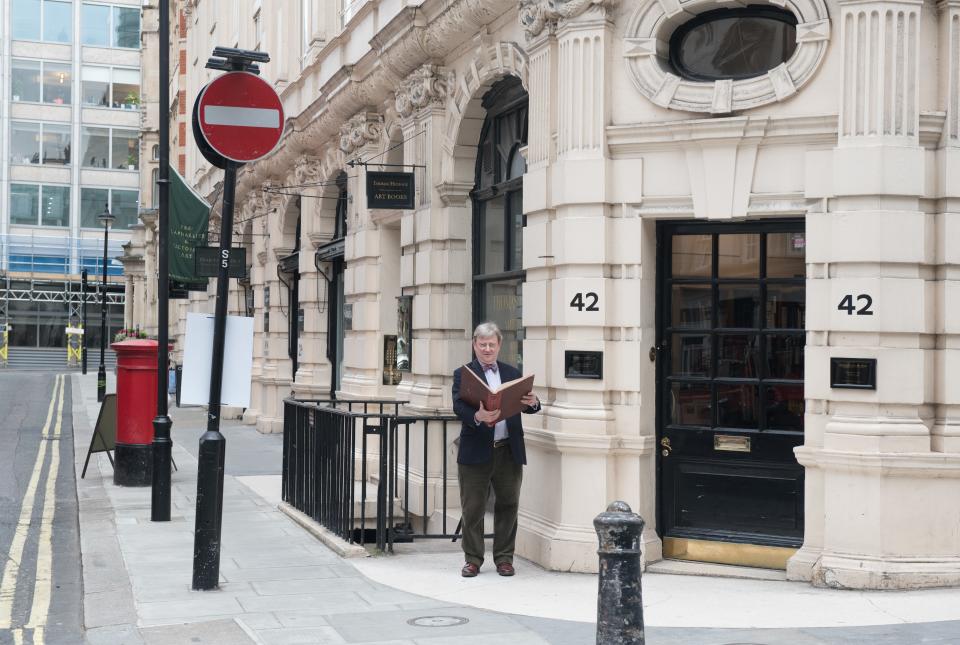
Head toward Piccadilly, drop into the Royal Academy, lunch at the newly restored Senate Room by starchitect Sir David Chipperfield before heading over to Clifford Street, where luxurious antiques, objects, clothing, and heritage leather goods shop Connolly resides. Simone Rocha's whimsical shop on Mount Street and neighbors Roksanda and Christopher Kane are worth a peek. Carry on to 5 Carlos Place, where online retailer Matches Fashion has recently opened its latest brick-and-mortar outpost (shoppable furniture, art, and home goods as well as fashion) on five floors of a quintessentially British 19th-century Queen Anne–style townhouse. Hungry? Stop in at Marchesi, the Prada-owned pastry shop started in 1824. Their first foray outside of Italy opens any day now.
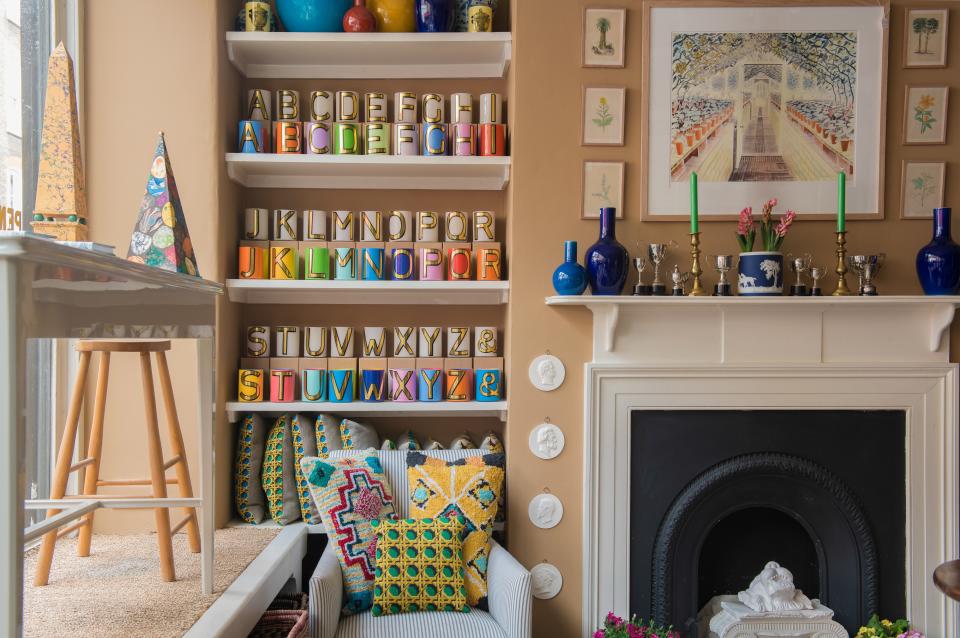
Hail a black cab to Bloomsbury, where Pentreath & Hall's jewel box of a shop features alphabet brush pots, decoupage, colorful felt coasters, candles, marble obelisks, and more. Wander charming Lamb’s Conduit Street around the corner. Or taxi to Tate Britain, the granddaddy of the Tate museums, and see how a young Van Gogh fell in love with and was inspired by Britain (a blockbuster exhibit on until August 11, 2019).
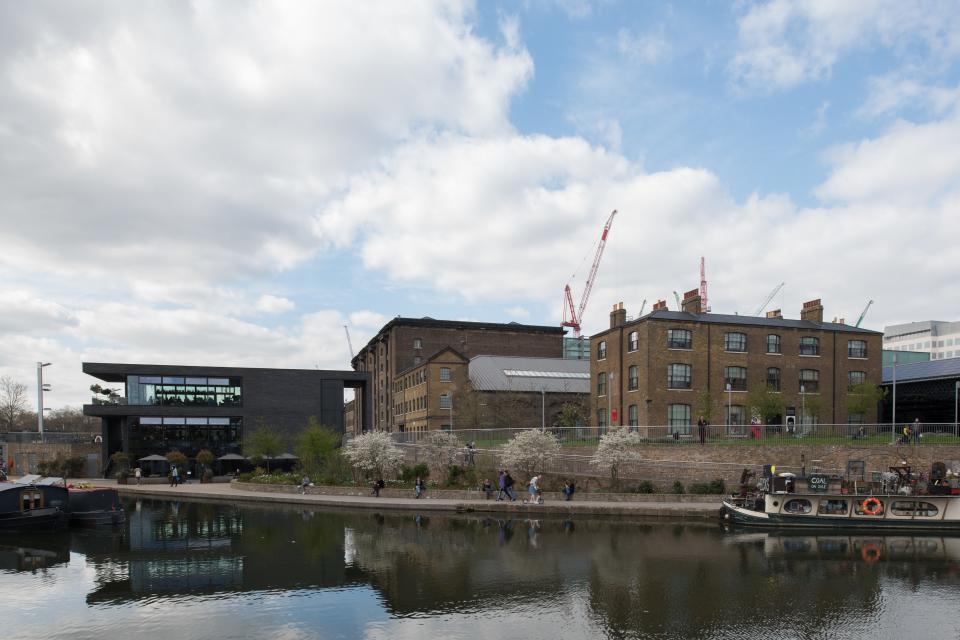
Coal Drops Yard, the latest addition to King’s Cross, is one of Europe’s largest regeneration projects. Modern architecture meets historic fabric, creating a new piece of old London, imagined by British designer Thomas Heatherwick (also responsible for the Vessel sculpture in New York’s Hudson Yards). Heatherwick has created a unique retail hub, keeping the surviving structures, streets, and ironwork of the original 19th-century Victorian coal drops while adding two unifying sensuous roofs of Welsh slate, elevated walkways, and a garden of wildflowers. Coal Drops Yard has a real sense of place, the antithesis of an anonymous shopping mall. And the retailers—shops, restaurants, and bars—reflect the building’s careful approach: Paul Smith, Tom Dixon, Miller Harris, Casa Pastor, Wolf & Badger, and Barrafina are just a few. Pop-ups will appear every six months in the former Victorian horse stalls along Lower Stables Street. A perfect place to wander on a sunny day.
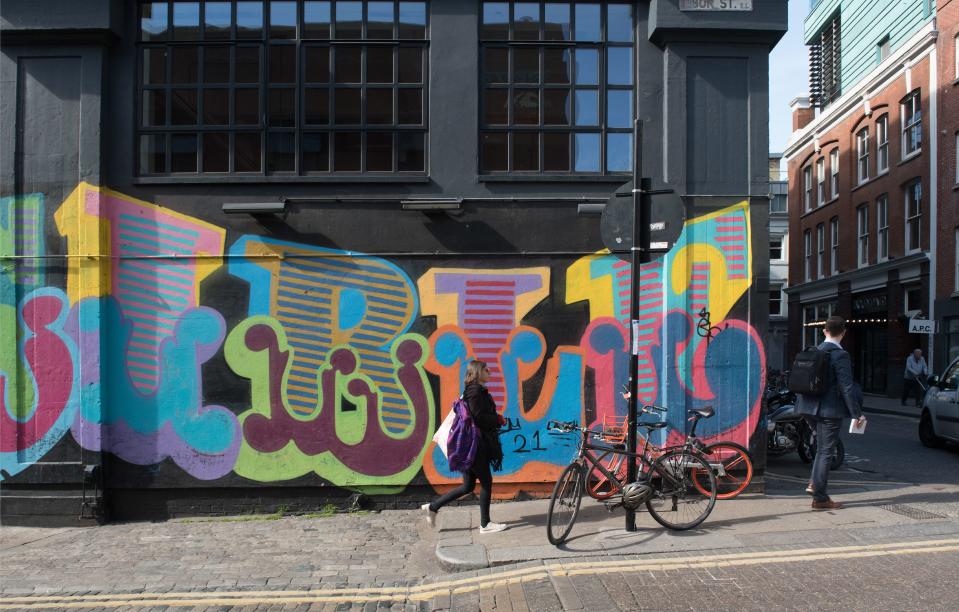
Not to be missed, Shoreditch is the creative hub of London, where home, fashion, and food take experimentation to the next level. This part of east London feels fresh—Brown’s East, House of Hackney, and Modern Society (now in L.A. too) show edgy labels, objets, and looks. Eat al fresco at Rochelle Canteen, set in the converted bike shed of the old Rochelle School, looking out on the trees of Arnold Circus. This 10-year-old restaurant run by chefs Margot Henderson and her partner Melanie Arnold offers everything from squid and fennel risotto to dictionary-essential Potato and Ogleshield Pie and Piccalilli. Ms. Henderson is married to renowned nose-to-tail chef Fergus Henderson, who opened his trailblazing restaurant St. John in 1994.
In London’s neighborhoods—really villages—you shop, look, taste, gaze, try, admire, decide, and always ask. Because, armed with this list, the next interesting place you go is very likely going to be recommended by the shopkeeper you are talking to right now.
Originally Appeared on Architectural Digest

